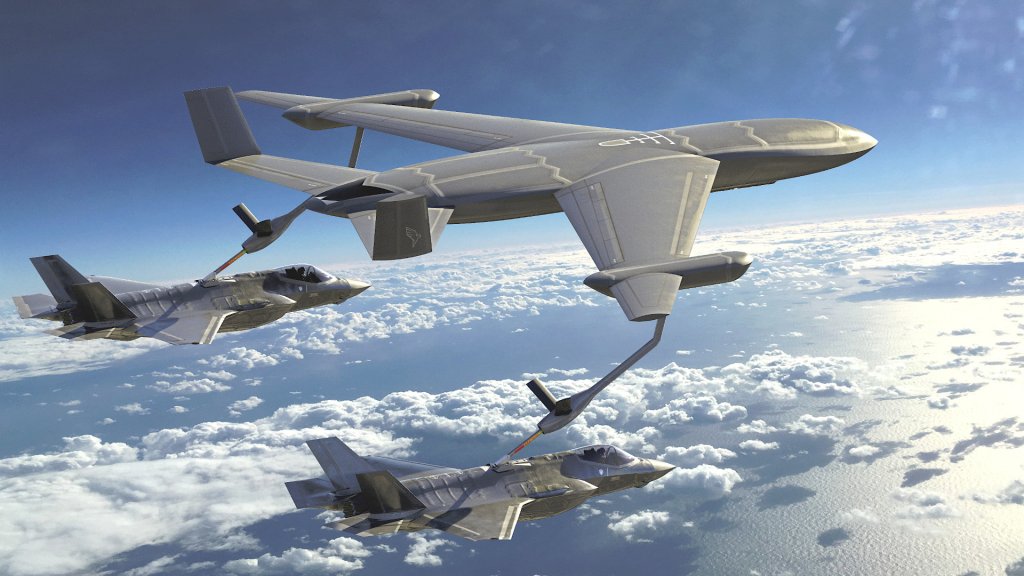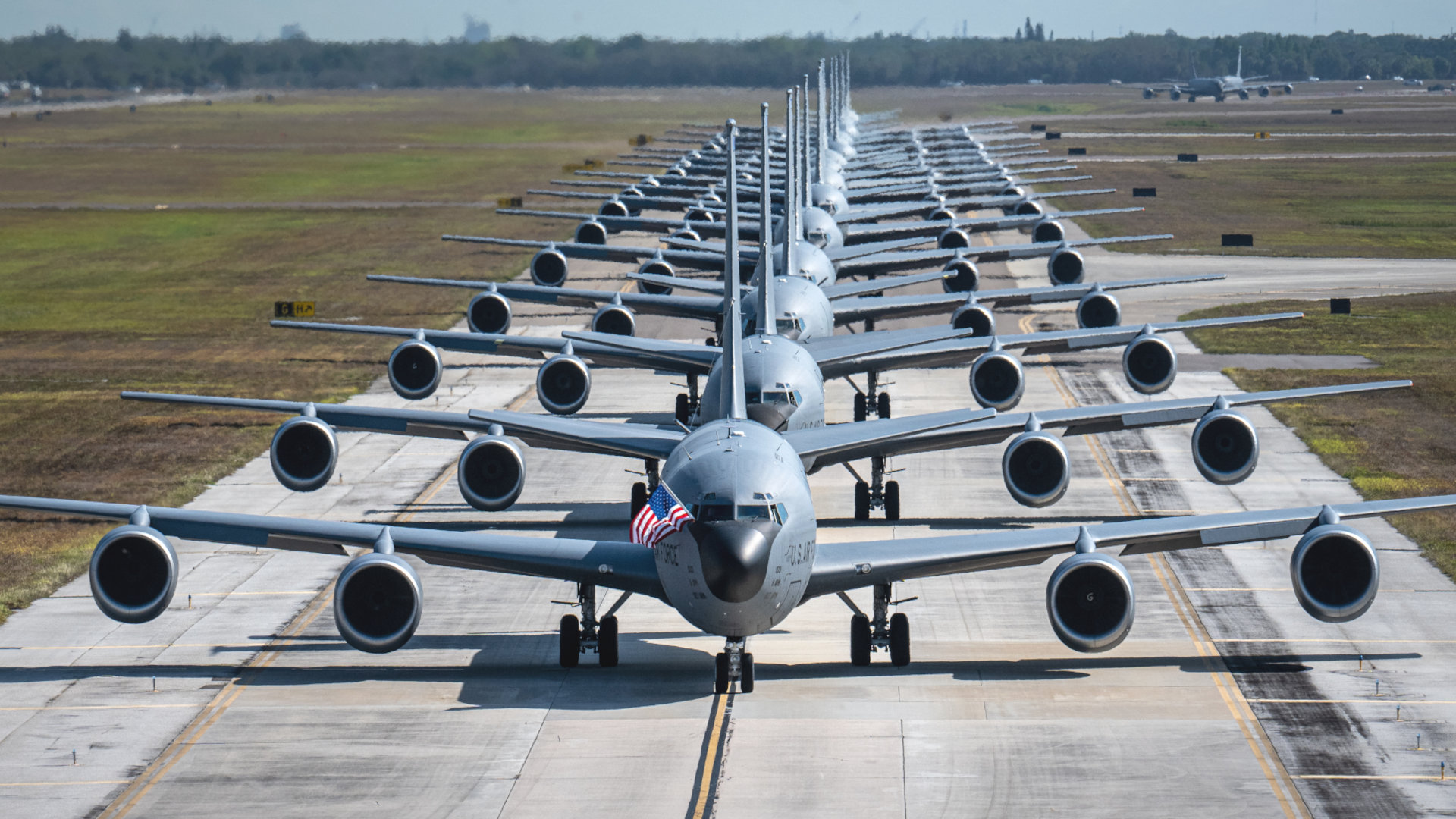The U.S. Air Force has developed a means to launch small drones from its KC-135 aerial refueling tankers, and is now looking at adding that capability to the fleet. The service says the tankers could send out uncrewed aerial systems to help defend themselves from incoming threats and just provide useful additional situational awareness, as well as to potentially perform other missions in the future.
Work on the prototype KC-135 Drone Delivery Mechanism (DDM) was completed sometime in Fiscal Year 2024, which ended on Sept. 30 of last year. However, the milestone only appears to have been disclosed in the Air Force’s proposed budget for the 2026 Fiscal Year, the release of which started last week. This is something that has been in the works since at least 2023.

The DDM line item in the budget request describes the system as being intended to provide “onboard defensive/ISR [intelligence, surveillance, and reconnaissance] capability for operations in [a] contested environment.”
The “drone delivery mechanism capable of launching unmanned aerial vehicles (UAV) from a KC-135 in flight [is] to provide an onboard defensive capability,” it adds. “A prototype integrating a common launch tube (CLT) with a modified KC-135 aft hatch door [was used] to produce and determine the viability of this concept.”
The CLT is a standardized aerial launch system that the U.S. military uses on various platforms, particularly fixed-wing special operations aircraft and drones, to fire precision-guided munitions and small uncrewed aerial systems. While the budget line does not name any specific type of drone to go along with the DDM, Raytheon’s Coyote and Anduril’s ALTIUS-600 are prime examples of designs in service with America’s armed forces today that can be launched via CLT.


Now, “Air Mobility Command and Air Force Life Cycle Management Center [are] in discussions on [the] best approach to transition the KC-135 Drone Deliver Mechanism (DDM) to the appropriate POR [program of record] and implement the capability on the KC-135 fleet,” according to the Air Force’s latest budget request.
The Air Force’s interest in using the KC-135 as an aerial launch platform for up to 100 small drones first emerged publicly in January 2023 in a leaked memo from now-retired Gen. Mike Minihan, who was then-head of Air Mobility Command (AMC). Minihan’s missive was centered on an ominous warning about the prospect of a high-end fight with China by 2025, and implored his command to take a host of new steps to prepare for that contingency.
On several subsequent occasions, Minihan talked further about how KC-135-launched drones could be used to help defend those tankers and act as additional sensor nodes, as well as perform a host of other potential missions. He also regularly highlighted how the CLT would offer a readily available launch mechanism.

“If you’re a KC-135, and you have something like that … I can shoot a decoy out. I can shoot something that can go take a rescue raft to a downed Airmen. I can shoot something that can take a battery to a soldier on an island that needs to get his radio or her radio up to speed,” Minihan told TWZ and other outlets at a media roundtable on the sidelines of the Air & Space Forces Association Warfare Symposium in February 2024. “You know, I can do precision navigation timing. I can have something go down and look at the airfield that I’m about to land on and understand where the craters are, and if the airfield is serviceable.”
At that time, Minihan said a demonstration of that capability was set to come later in the year, which we now know occurred.
In a defensive role, which the Air Force budget documents say the DMM system is primarily focused on now, KC-135-launched drones could also carry small jammers. Uncrewed aerial systems fitted with various sensors could also help spot threats and otherwise provide additional situational awareness. It is unclear whether some type of defensive anti-air interceptor could be developed that fits inside CLT and that would be capable against something like a modern adversary missile.
As noted, Minihan repeatedly raised the possibility of drones deployed from KC-135s eventually taking on other missions, including signal relay and even combat search and rescue support. Ostensibly defensive decoys could be used to help clear pathways into forward areas for other friendly aircraft, too. Kamikaze drones could be launched to help provide close air support or overwatch in low-threat areas, as well.
In general, CLT launchers are often reloadable from within the aircraft they are mounted on, which could allow KC-135s to fire various payloads via the DMM as required. In addition, the tankers have significant internal payload space given their secondary cargo-carrying mission, which could give them substantial magazine depth when configured for the drone-launching role. If large groups of drones could be deployed in a fully networked swarm, it would open up additional operational possibilities. TWZ previously detailed the benefits of this kind of drone swarm launch capability in laying out a broader case for reconfiguring P-8 Poseidon maritime patrol planes as multi-role arsenal ships, which you can read more about here.
A drone launcher that works on the KC-135 could also conceivably be adapted to the KC-46 tanker.

All this being said, it is not surprising that defensive capabilities are top of mind when it comes to the DMM. The Air Force’s tanker fleets will be in high demand during any future major conflict, especially a high-end fight against China across the broad expanses of the Indo-Pacific region. In turn, those aircraft will be top targets in increasingly more diverse and complex threat ecosystems. The Air Force warned just in January that U.S. forces look set to be facing anti-air missiles with ranges of up to 1,000 miles by 2050.
Just how much added defensive capability the KC-135s will gain from the drone launchers remains to be seen. The Air Force has been exploring next-generation aerial refueling concepts, including stealthy tankers and new boom-equipped refueling pods that tactical jets could carry, as part of a Next Generation Air-refueling System (NGAS) ‘system of systems.’ However, many prospective NGAS capabilities are still seen as being years away from entering operational service at best. Air Force officials have repeatedly highlighted how add-on defensive systems for existing non-stealthy tankers might be a more viable, not to mention economical, option in the near term.

“There are other ways that you can enhance survivability of air refueling aircraft,” Air Force Chief of Staff Gen. David Allvin said in March. “You can do it through electronic warfare. You can do it through, you know, escort support. There are different ways that you can do that, and so this is all part of the entire NGAS evaluation.”
“In a broad brush, there’s a variety of ways to survive. We can continue to upgrade the [existing tanker] fleets and put defensive systems on it, just like we’ve upgraded the navigation [systems], engines, and more over the past decades,” AMC’s current head, Air Force Gen. John Lamontagne, also said in March. “We can also team up with other partners in the joint force, and have them defend us. And so a variety of ways to do it, even if we don’t pursue NGAS.”
This general viewpoint is reflected right in the NGAS line item in the Air Force’s 2026 Fiscal Year budget request.
“Alternatives for more survivable tanking capability could potentially be addressed through more resilient connectivity and on-board and off-board self-protection,” it notes. “Acquisition strategies for any or all of these options would be directly related to requirements that will be refined through the FY 2026 activities including, but not limited to, market research and concept refinement as well as high fidelity modeling and simulation. Any future contracts would consider a phased contracting approach as part of the acquisition strategy to facilitate maximum competition for the max amount of time feasible based on requirements, schedule and funding.”
The Air Force is asking for $12.96 million for NGAS in the upcoming fiscal cycle, which is a relatively small amount, but also nearly double what it received for this effort in Fiscal Year 2025.
In the meantime, the Air Force looks to be pressing ahead with giving the KC-135 fleet the ability to launch drones as a more immediate way to bolster the defensive capabilities of those tankers.
Contact the author: joe@twz.com
